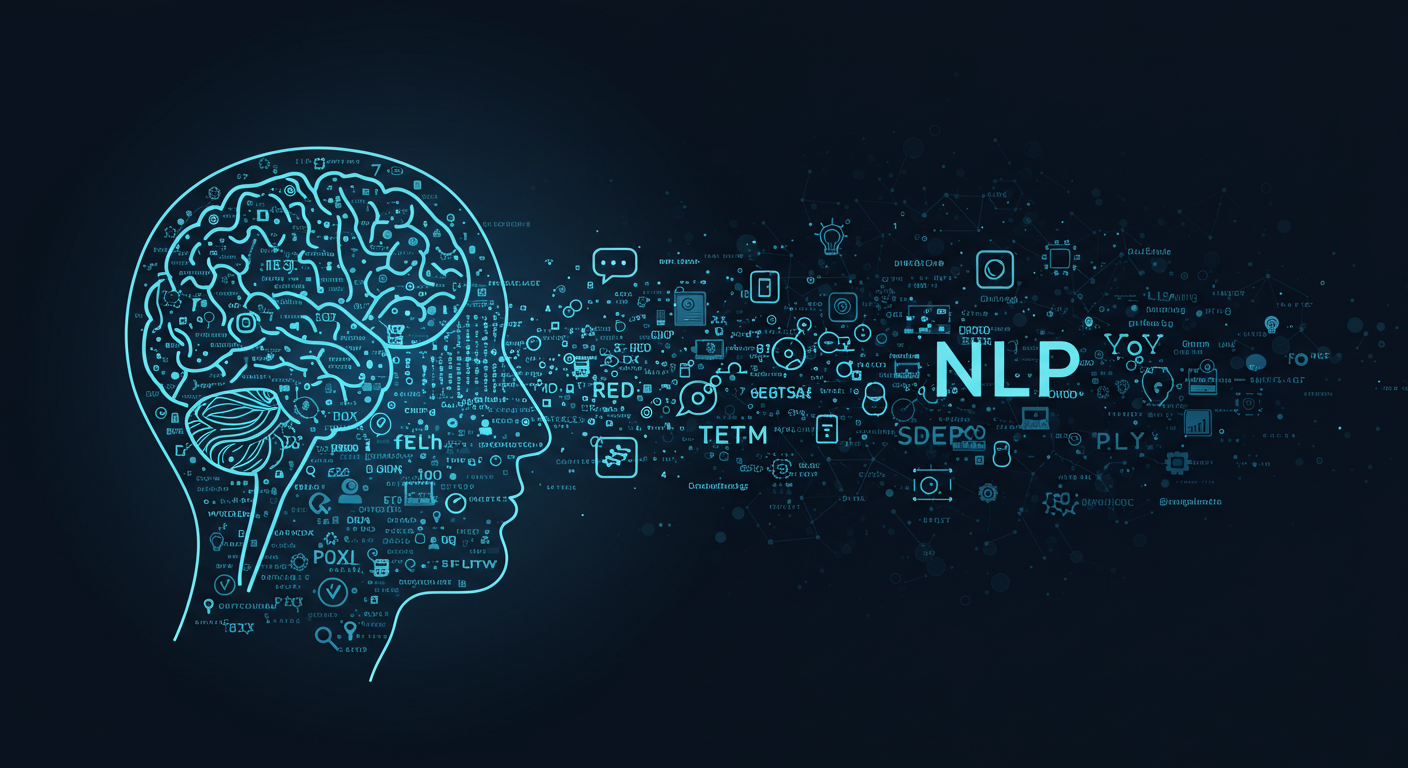What is Natural Language Processing (NLP)?
Natural Language Processing (NLP) is a crucial component of artificial intelligence (AI) that enables computers to comprehend, interpret, and produce human language. It combines linguistics, computer science, and machine learning to process and analyze textual and spoken data in a manner that is comprehensible to machines and humans.
At its core, NLP allows machines to communicate in a human-like manner. By processing natural language, which includes nuances, syntax, and meaning, NLP enables computers to understand not just words but the context and sentiment behind those words. Whether it’s through text or speech, NLP plays a crucial role in breaking down complex human language into a format that computers can understand and respond to.

How Does NLP Work?
NLP works through several steps, including preprocessing and data processing. In text-based NLP, the process begins with tokenization, which divides text into individual words or phrases. Following that, part-of-speech tagging helps the system identify nouns, verbs, and other components of speech, while stop-word removal ensures that only meaningful words are kept for analysis. Lemmatization reduces words to their base form, making processing more efficient.
Once data is preprocessed, NLP models, which may use machine learning or deep learning techniques, analyze the structure and semantics of the language. Deep learning models, particularly transformers, are among the most effective methods in modern NLP. These models utilize massive datasets to predict relationships and context between words, making NLP applications, such as machine translation, speech recognition, and text summarization, more accurate than ever.
Types of NLP Techniques
- Rule-based NLP: Early NLP systems relied heavily on predefined rules and decision trees. These systems could only respond to fixed commands or simple queries, resulting in significant limitations.
- Statistical NLP: Statistical NLP uses machine learning to assign statistical probabilities to various meanings of words and sentences. This enables NLP systems to comprehend language context and refine their predictions based on the learned data.
- Deep Learning NLP: The most advanced form of NLP today, deep learning algorithms analyze vast amounts of unstructured data to generate human-like language. These models, like BERT (Bidirectional Encoder Representations from Transformers) and GPT (Generative Pre-trained Transformers), are capable of performing tasks such as content generation, language translation, and sentiment analysis with high precision.
Applications of NLP
NLP has widespread applications that impact various industries. Some of the most notable uses include:
- Search Engines: NLP enhances search functionality by understanding the intent behind user queries rather than simply matching keywords. This leads to more accurate and contextually relevant search results.
- Chatbots and Virtual Assistants: From customer service to personal assistance, chatbots powered by NLP can engage in dynamic conversations, providing support based on natural language input from users. Virtual assistants like Amazon’s Alexa, Apple’s Siri, and Google Assistant all rely on NLP to interpret user commands and respond in a human-like manner.
- Machine Translation: NLP plays a pivotal role in translating text between different languages. Models like Google Translate utilize NLP to not only translate words but also retain the meaning and context, ensuring that the translation is accurate.
- Sentiment Analysis: By analyzing text for emotional tones, NLP helps businesses understand customer sentiment, monitor social media chatter, and analyze feedback from reviews or surveys. This is particularly useful in customer service and market research.
- Content Creation: NLP-powered systems can generate high-quality, human-like text for a wide range of purposes, including marketing copy, articles, and even creative writing. This is achieved through pre-trained models that understand context, tone, and relevance, ensuring the generated content meets user expectations.
The Benefits of NLP
NLP offers several advantages that make it indispensable across multiple sectors:
- Automation of Repetitive Tasks: NLP can automate tasks such as answering customer queries, categorizing data, or processing documents, thereby reducing human workload and operational costs.
- Improved Data Analysis: NLP enables businesses to process vast amounts of unstructured data, facilitating the more efficient extraction of insights and supporting data-driven decision-making.
- Enhanced Customer Experience: By enabling more intuitive interactions with machines, NLP enhances the customer experience through more efficient and accurate customer service tools, such as chatbots and voice assistants.
- Content Generation and Customization: NLP systems can automatically create personalized content based on specific user inputs, offering scalable solutions for marketing, advertising, and customer communications.
Challenges in NLP
Despite its advantages, NLP still faces challenges in fully understanding and replicating human language. Issues such as ambiguity, where a single word can have multiple meanings depending on the context, and sarcasm, where the intended meaning contrasts with the literal interpretation, pose difficulties for NLP models. Furthermore, the large volume of unstructured data needed for training models can be a barrier to developing accurate and effective NLP systems.
In Summary
Natural language processing is revolutionizing how machines interact with human language, making it more accessible, efficient, and impactful. As NLP technology continues to evolve, we can expect even more advanced and nuanced systems that will bridge the gap between human communication and machine understanding, ultimately enhancing business operations and everyday digital interactions.